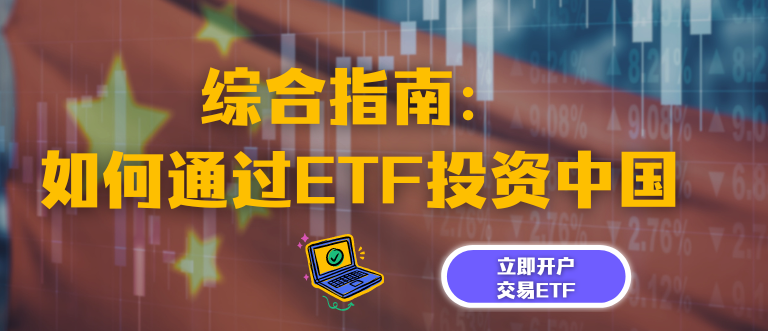Half stock
Table of Contents
Half stock
Half stocks represent a fascinating chapter in financial history that investors and stock market enthusiasts may find helpful to comprehend. Half stocks were once a common approach for businesses to obtain capital without diluting current shareholders’ ownership by issuing full shares. Investors can have a deeper grasp of the history of the stock market and the ways that firms have raised capital over time by learning more about half stocks and fractional shares. Investors can buy financial instruments with greater confidence if they have this knowledge.
What is half stock?
Half stock is a type of financial security representing an ownership stake in a firm equal to half the par value of all outstanding shares. It is a security that equals 50% of the value of common stock. When businesses needed to raise cash but didn’t want to dilute current shareholders’ ownership by issuing total shares, half shares were frequently employed in the past. To make their claims more accessible to novice investors, some corporations also offered half stocks. Half stocks are now very uncommon, and most businesses only issue whole shares of stock for trading on public markets.
Understanding half stocks
The par value of a half stock, a type of financial security, is half that of a whole stock. In the past, they were frequently used by businesses looking to raise funds without issuing total shares, which would have reduced current shareholders’ ownership. Half stocks are similar to fractional shares, which certain startups or private corporations may offer to raise money.
Half stocks may be less liquid on the market than total stocks, although they may still have the same voting rights, dividend entitlements, and other corporate actions. As a result, there can be fewer buyers and sellers, which makes it harder to buy or sell half-stocks at a reasonable price. Due to the rarity of half stocks in today’s financial markets, full stocks are the preferred method for corporations to issue shares.
Working of half stocks
Half stocks function similarly to complete stocks in that they signify a portion of ownership in a business. As the name implies, half-stocks are worth half as much as a whole stock. For instance, if a complete stock’s par value is US$100, a half stock would be worth US$50. Half-stocks are often issued in the same manner as full-stocks and may have the same voting rights, dividend entitlements, and other corporate actions as full-stockholders.
Half-stocks, however, might not be as liquid as full-stocks because there might be fewer buyers and sellers. This may make it more challenging for investors to purchase or sell partial shares at a fair price.
The half stock will pay out a smaller dividend to shareholders and give the owners fewer claims on assets in the unlikely scenario that the company needs to file for bankruptcy and liquidate. However, it is still regarded as preferred stock and continues to be higher on the priority ladder than common stock.
Benefits of half stocks
The key benefit of half stocks is that they let businesses raise money while having a minor effect on current shareholders’ ownership. Companies can raise money by releasing half of their shares rather than the whole amount, preserving the value of their current stock.
Smaller businesses or those with fewer outstanding shares may find this particularly appealing. Half supplies may also be more cost-effective than total shares, making it more straightforward for smaller investors to buy equity in a company.
Furthermore, because half stores offer more flexibility in dividing ownership between different parties, some investors might favour them. However, total shares are more prevalent in today’s financial markets, and half stocks are relatively uncommon.
Example of half stocks
In today’s financial markets, total shares rather than half shares are the norm for stock issuance by firms. Half stocks have, however, been used historically, most notably by the New York and Erie Railroad Company in the middle of the 19th century.
The corporation issued half shares to raise money without diluting current shareholders’ ownership. The notion of fractional shares, similar to half stocks but may not have the same legal standing or trading liquidity as public half stocks still used by certain private enterprises and startups today to raise financing.
Frequently Asked Questions
Half stocks offer businesses an opportunity to raise money without reducing the shareholding of current shareholders. They were utilised in the past when some investors thought the par value of a complete stock was too high. Although half stocks are less common and less liquid than full stocks in the market today, they may have the same voting rights, dividend entitlements, and other corporate actions as full stocks. Overall, comprehending the idea of half stocks can help one understand how the stock market has changed.
Investors should be aware that half stocks, a unique financial asset class, are worth half as much as whole stocks at par. Although they may be entitled to dividends and have voting rights, and they have lower market liquidity. Full stocks are now more frequently used by businesses to issue stock.
Half stocks are available for trading on private markets and over-the-counter, but the chances are few because they are uncommon.
Half stock holders may or may not have voting rights depending on the company’s policies, while common stockholders have voting rights. Half stocks are relatively uncommon and less often traded than common stocks. Therefore, their prices might move dramatically. Common stock is a more accessible and flexible form of investing than half stock.
Half stocks are uncommon in today’s financial markets, and most investors do not generally promote them as an investment strategy. However, they can find them for purchase. In that case, investors with a keen interest in financial history and a desire to investigate unique investment opportunities may decide to invest in half stocks.
Related Terms
- Market maker
- Options expiry
- Payment Date
- Treasury Stock Method
- Reverse stock splits
- Ticker
- Restricted strict unit
- Gordon growth model
- Stock quotes
- Shadow Stock
- Margin stock
- Dedicated Capital
- Whisper stock
- Voting Stock
- Deal Stock
- Market maker
- Options expiry
- Payment Date
- Treasury Stock Method
- Reverse stock splits
- Ticker
- Restricted strict unit
- Gordon growth model
- Stock quotes
- Shadow Stock
- Margin stock
- Dedicated Capital
- Whisper stock
- Voting Stock
- Deal Stock
- Microcap stock
- Capital Surplus
- Multi-bagger Stocks
- Shopped stock
- Secondary stocks
- Screen stocks
- Quarter stock
- Orphan stock
- One-decision stock
- Repurchase of stock
- Stock market crash
- Stock options
- Stock split
- Foreign exchange markets
- Stock Market
- FAANG stocks
- Unborrowable stock
- Joint-stock company
- Over-the-counter stocks
- Watered stock
- Zero-dividend preferred stock
- Bid price
- Authorised shares
- Auction markets
- Market capitalisation
- Arbitrage
- Market capitalisation rate
- Garbatrage
- Autoregressive
- Stockholder
- Penny stock
- Noncyclical Stocks
- Hybrid Stocks
- Large Cap Stocks
- Mid Cap Stocks
- Common Stock
- Preferred Stock
- Small Cap Stocks
- Earnings Per Share (EPS)
- Diluted Earnings Per Share
- Dividend Yield
- Cyclical Stock
- Blue Chip Stocks
- Averaging Down
Most Popular Terms
Other Terms
- Direct market access
- Deficit interest
- Strong order book
- Economic calendar
- EPS forecast
- Fiat money
- Adjusted distributed income
- International securities exchanges
- Settlement currency
- Federal funds rate
- Active Tranche
- Convertible Securities
- Synthetic ETF
- Physical ETF
- Initial Public Offering
- Buyback
- Secondary Sharing
- Bookrunner
- Notional amount
- Negative convexity
- Jumbo pools
- Inverse floater
- Forward Swap
- Underwriting risk
- Reinvestment risk
- Final Maturity Date
- Secondary Market
- Margin Requirement
- Mark-to-market
- Pledged Asset
- Yield Pickup
- Subordinated Debt
- Trailing Stops
- Stochastic Oscillator
- Bullet Bonds
- Basket Trade
- Contrarian Strategy
- Exchange Control
- Notional Value
- Relevant Cost
- Dow Theory
- Speculation
- Stub
- Trading Volume
- Going Long
- Pink sheet stocks
- Rand cost averaging
- Sustainable investment
- Stop-limit sell order
- Economic Bubble
Know More about
Tools/Educational Resources
Markets Offered by POEMS
Read the Latest Market Journal

继前一篇我们介绍了越南市场后,接下来我们将介绍泰国市场,泰国的表现一样引人瞩目。 受结构性问题影响,相较于菲律宾、马来西亚、印度尼西亚和越南,2023年,泰国全年GDP增幅远低于其他国家。泰国2023年GDP同比2022年增长1.9%,低于市场预测的2.5%。 2023年,中国-东盟自贸协定零关税给泰国带来了直接且沉痛的打击。由于消费疲软、贸易壁垒等政策影响,产能过剩,导致大量低价进口中国商品涌入,使得2023年泰国与东盟9国的总贸易额出现了3年来的首次下滑,其总贸易额为4万亿泰铢(约1489亿新元)。由于巨大的成本价格差异,其中泰贸易逆差扩大至1.29万亿泰铢(约480亿新元)。其中,小家电、蔬果、箱包和服装行业处境最为艰难。 尽管如此,旅游业的复苏增长带动了非农业产业的增长。政府数据显示,2023年来访泰国的总人数达3.15亿人次,较去年增长40.3%。其中,国际游客超过2800万人次,马来西亚和中国为最大客源。随着泰国对中国和哈萨克斯坦实施免签政策和其他活动措施,预计2024年将带来更多游客,推动泰国旅游业的复苏进程,并力争实现2024年旅游营业收入达到3.5亿泰铢(约0.12亿新元)的目标。 热销股票 1. ADVANCED INFO SERVICE PUBLIC CO., AIS,AIS通信(ADVANC.TH) AIS通信是泰国的最大移动运营商,主要经营三大业务线,包括移动业务、AIS Fibre品牌下的高速家庭宽带业务,以及企业业务。同时AIS也提供多样化的数字生活服务。AIS通过数字智能基础设施、跨行业合作和人力资本与可持续发展这三方面,致力于“成为泰国最受尊敬的认知科技公司”的愿景。 (来源:AIS2023财年年报)...

指数差价合约是区别于投资个股、指数期货或交易所交易基金(ETF)的一种热门替代品,因为该工具允许您获得特定指数的风险投资组合,并从柜台价格走势中获益,无论做多或做空。此外,由于差价合约的杠杆特性,交易者只需拿出合约价值的一小部分作为初始合约的抵押品即可启动一笔合约。这样,交易者就可以方便快捷地进行整个市场的交易。 本期重点摘要: 股票指数只是一组资产的集合,它概括了股市中某一行业板块的表现。许多此类指数根据不同的标准包含和/或排除某些股票。 指数差价合约有助于利用构成单一指数的各种股票分散您的投资组合、实现投资组合多样化。这也有助于避免 “选择悖论”:指数帮助您决定投资哪些股票。 最重要的是,指数差价合约让交易者获得对指数的接触,而不用购买组成指数的个股。这种具有成本效益的策略让您只需交易指数的价格变化,而无需拥有相关指数本身。 什么是股票指数? 当人们说 “今天市场上涨了 “或 “市场下跌了 “时,你会不会好奇,分析师是如何评估整个市场? 这很简单,他们只需分别将按照今天的报价和昨天的报价购买所有公司所需的金额相加。两相比较下,如果发现今天的数字大于前一天的数字,那么我们就知道今天的市场上涨了,反之亦然。然而,数字的汇总和对比可能会很繁琐和麻烦。创建指数就是为了方便测量。 因此,”股票指数 “一词指的是一组股票(或其他资产)的集合,它提供了股票市场特定部分表现的概况。该指数被用作一个替代指标,用来衡量市场在特定时间段内的涨跌情况,比如以上例子中所描述的逐日指数。...

本文旨在为中级外汇交易者提供必要的信息和知识。它将涵盖我们上一篇文章 “五分钟看懂世界上最活跃的市场-外汇差价合约(FX CFD)...

解锁台湾股市的投资潜力!深入了解由强大的技术驱动型经济推动的股票市场,2023 年机械和电气设备将占出口的 69%。在政治稳定、投资者友好的法规和健全的法律框架下,探索台积电和富士康等全球顶级企业。台湾股市值得称赞的历史表现和在国际贸易中的的重要性使其更具吸引力。在这个科技实力雄厚、经济稳定、充满活力的股票市场中,抓住增长机遇!

了解外汇市场 外汇交易市场又称外汇市场,是一个买卖货币的全球性金融市场。它是全世界规模最大、流动性最强的金融市场,每日交易量超过 6 万亿美元。但外汇市场有一个重要却常被忽视的一点,就是它受交易心理的影响。在本文中,我们将探讨外汇市场的复杂性,还有把重点放在交易心理与传统交易策略共同发挥的关键作用...

五分钟看懂世界上最活跃的市场 -外汇差价合约(FX CFD)
外汇交易市场俗称外汇或外汇市场,是全球金融市场的支柱。它是世界上最活跃的市场,2022 年 4 月,全球交易额达到创纪录的每天 7.5 万亿美元[1] 。这个活跃的市场为交易者提供了利用货币价格波动赚取利润的机会。在本文中,我们将解释外汇市场的基本原理,助您了解其投资机制。 什么是外汇? 外汇市场是一个分散的全球市场,世界上所有货币都在这里进行交易...






















